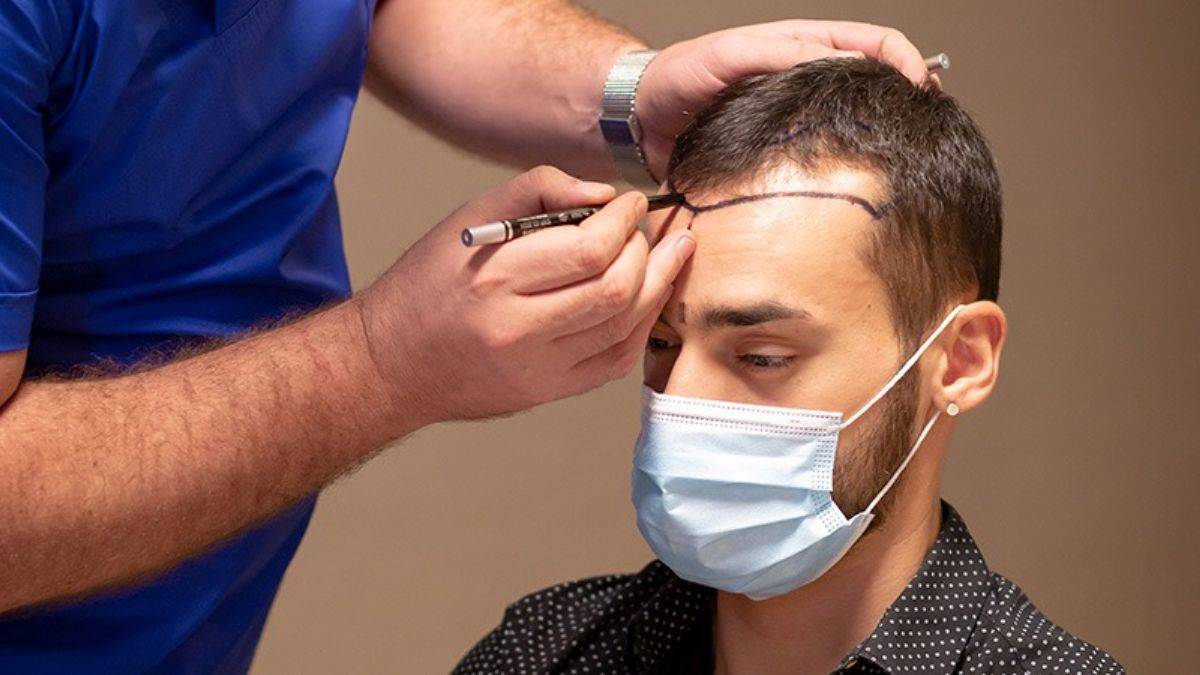One of the most common questions patients ask before undergoing a hair transplant is, “How many grafts will I need?” This is a critical consideration because it directly affects the procedure’s cost, timeline, and final results. If you’re planning a Hair Transplant in Islamabad, knowing your estimated graft count can help you make informed decisions and prepare for the journey ahead.
This guide will walk you through what a graft is, how graft needs are determined, and what you can expect during the planning stage of your hair restoration procedure.
What is a Hair Graft?
A hair graft is a small piece of scalp tissue containing hair follicles. Each graft typically contains 1 to 4 hair follicles. During a hair transplant, these grafts are extracted from the donor area (usually the back or sides of the scalp) and implanted into areas affected by hair loss.
The number of grafts required depends on several factors, including the degree of baldness, the density you wish to achieve, the characteristics of your hair, and your overall goals for the procedure.
Factors That Affect Graft Estimation
1. Norwood Scale Classification
The Norwood Scale is a standardized system used to measure the severity of male pattern baldness. It ranges from stage 1 (minimal hair loss) to stage 7 (extensive baldness). The more advanced the stage, the more grafts you are likely to need:
- Norwood Stage 2: 500–1,500 grafts
- Stage 3: 1,500–2,500 grafts
- Stage 4: 2,500–3,500 grafts
- Stage 5: 3,500–4,500 grafts
- Stage 6: 4,500–6,000 grafts
- Stage 7: 6,000–7,000+ grafts
Each case is unique, so these are only general guidelines.
2. Desired Hairline and Density
Some patients want a full, youthful hairline with high density, while others prefer a more natural, mature look. The more coverage and density you aim for, the more grafts you’ll require. For example, reconstructing just the hairline and temples might require 1,000–2,000 grafts, while a full top restoration might need over 4,000.
3. Hair Characteristics
Your natural hair attributes influence how many grafts are needed. Factors include:
- Hair Thickness: Thicker hair provides more coverage per graft.
- Hair Color vs. Skin Tone: Less contrast (e.g., light hair on fair skin) offers more natural coverage.
- Curl/Wave Pattern: Curly or wavy hair creates the illusion of fullness.
4. Donor Area Quality
The number of available grafts is limited by the size and health of your donor area. A skilled surgeon will balance the extraction so that donor areas don’t appear thin or over-harvested.
5. Previous Transplants
If you’ve had previous transplant procedures, the remaining donor hair might be limited. Also, scar tissue may impact graft survival in recipient areas.
Example Graft Requirements by Region
Here’s a breakdown of how many grafts may be needed for different areas of the scalp:
Area of TransplantEstimated GraftsHairline only800–1,500 graftsFrontal zone1,500–2,500 graftsCrown area1,000–2,500 graftsFull top of scalp4,000–7,000+ grafts
Again, actual numbers vary based on your hair loss pattern and personal goals.
How Do Surgeons Estimate Graft Numbers?
A qualified surgeon will perform a detailed consultation involving:
- Scalp analysis using magnification and digital imaging
- Measurement of balding areas
- Review of the Norwood classification
- Estimation of donor hair capacity
- Consideration of future hair loss risks
Advanced clinics may also use AI-powered software or simulation tools to create a visual projection of what different graft amounts will look like post-procedure.
How Grafts Are Counted and Used
Not all grafts are equal. A typical classification includes:
- Single-hair grafts: Ideal for the hairline for a natural look
- Double/triple-hair grafts: Used for central and crown areas to build density
- Follicular units with 4+ hairs: Less common but excellent for thickening larger zones
Your surgeon will strategically place each type for optimal visual results. The goal is not just to add hair but to do so in a way that mimics your natural growth pattern.
Planning Your Transplant Around Graft Availability
There’s a maximum number of grafts that can be safely harvested from the donor zone. For most people, that’s around 6,000–8,000 grafts across a lifetime. Surgeons must plan accordingly, especially if you’re likely to experience more hair loss in the future. This makes graft conservation and smart placement essential.
Can You Get All Grafts in One Session?
Depending on the number of grafts needed and the technique used (FUE vs. FUT), your transplant may be done in one or multiple sessions.
- FUE: Typically 2,000–3,500 grafts in one session
- FUT: Can extract up to 4,000+ grafts in one sitting
For very large sessions, mega-sessions (5,000+ grafts) may be planned, but only in well-equipped clinics with highly experienced teams.
What Happens if You Don’t Have Enough Donor Hair?
In some cases, patients don’t have sufficient donor hair to achieve their ideal results. Options include:
- Body Hair Transplants (BHT): Hair from the chest or beard may be used
- Reduced Density Strategy: A compromise to improve appearance without full coverage
- Scalp Micropigmentation: Can add the illusion of density alongside a lower number of grafts
A skilled surgeon will walk you through your options and develop a realistic plan.
Conclusion
Understanding how many grafts you need for a hair transplant is crucial to setting proper expectations and planning your journey. While general estimates are helpful, only a professional consultation can provide an accurate count tailored to your hair loss pattern, donor area, and goals. Remember, a successful transplant is not just about numbers—it’s about balance, technique, and long-term planning.
If you’re ready to take the next step toward restoring your confidence, consider scheduling a consultation for a Hair Transplant in Islamabad. At Dynamic Clinic, you’ll receive expert advice, customized graft planning, and access to advanced technologies to ensure natural, lasting results.





Comments